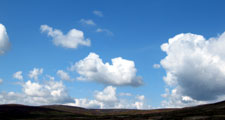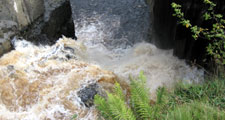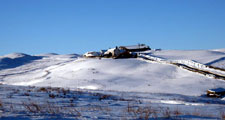Climate
The county lies largely in the rain shadow of the Pennines and the eastern lowlands are among the driest areas in England. It is also relatively cold; its mean annual temperature of 8.3C reflecting its northerly latitude, the cooling effect of the North Sea to the east and the lower temperatures of higher ground in the west.
Both rainfall and temperature vary considerably with altitude and there is a pronounced climatic gradient from west to east. The higher fells of the west of the county have a severe climate of high rainfall (>1200mm) and low temperatures. The lowlands are drier (<650mm) and milder although the coastal strip is affected by the cooling influence of the sea and subject to regular mists or frets.
Average wind speeds are relatively high, and some coastal and upland locations suffer from severe exposure. Away from the warming influence of the sea in winter along the coast, frosts occur between September and May in most years.



